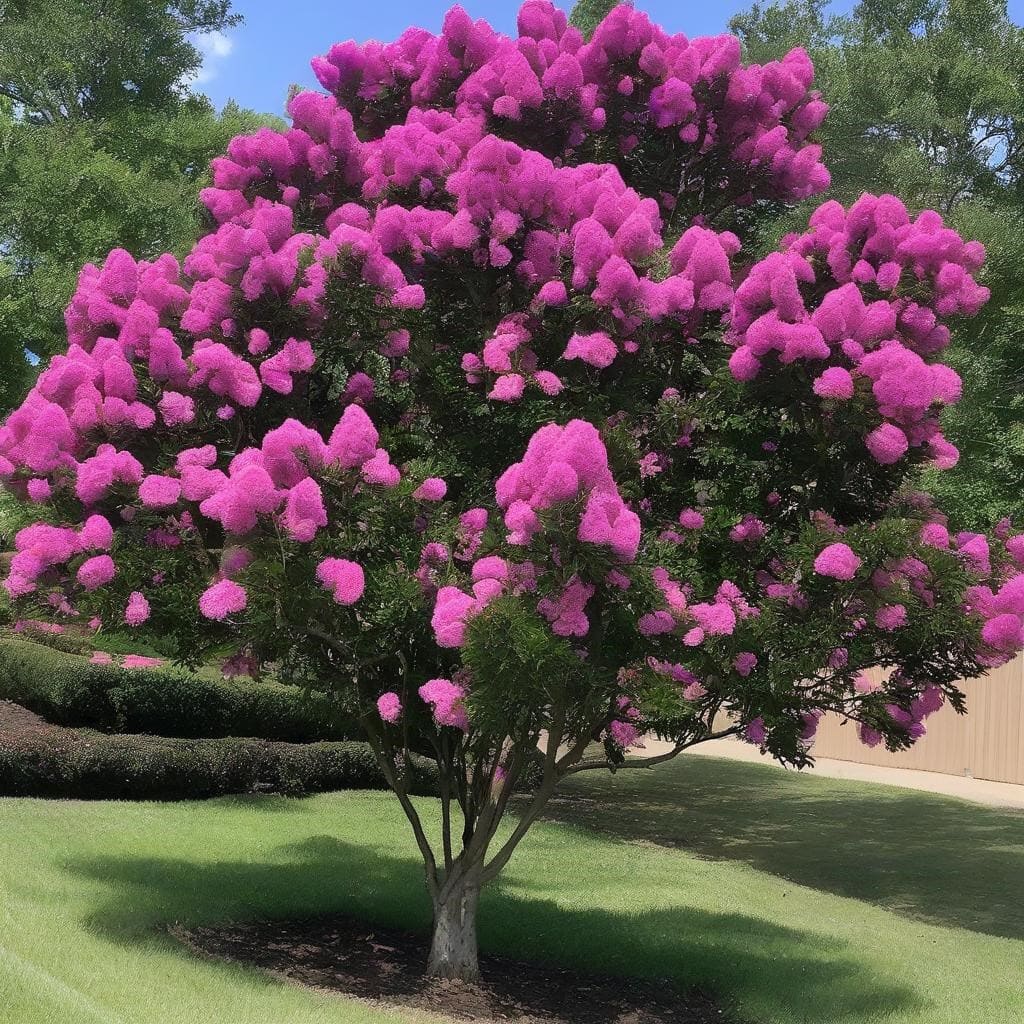
If you want to add a vibrant touch to your garden, the Muskogee Crape Myrtle might be just what you need. This plant is a favorite among gardeners because of its stunning lavender flowers and hardy nature. But how do you ensure your Muskogee Crape Myrtle thrives? Let’s dive into planting, caring for, and maintaining this beautiful shrub.
The Muskogee Crape Myrtle (Lagerstroemia indica x fauriei ‘Muskogee’) is a hybrid variety celebrated for its long blooming season and disease resistance.
It can grow up to 20-25 feet tall and spread 15-20 feet wide, making it an excellent choice for creating a striking focal point in your garden.
Muskogee Crape Myrtles thrive in full sun, requiring at least six hours of direct sunlight daily. Choose a spot in your garden with ample sunlight to ensure robust flowering.
These shrubs prefer well-drained soil. Before planting, work in some organic compost to enrich the soil and improve drainage. While Muskogee Crape Myrtles are adaptable to various soil types, they perform best in slightly acidic to neutral pH levels.
In the first growing season, keep the soil consistently moist. Once established, Muskogee Crape Myrtles are drought-tolerant, but they still appreciate regular watering during dry spells.
Fertilize in early spring with a balanced, slow-release fertilizer to support growth and flowering. Avoid over-fertilizing, as this can lead to excessive foliage at the expense of blooms.
Pruning is essential for maintaining the shape and promoting vigorous blooming. The best time to prune is in late winter or early spring before new growth begins. Remove any dead or damaged branches, and thin out crowded areas to improve air circulation.
While Muskogee Crape Myrtles are resistant to powdery mildew, high humidity can sometimes lead to outbreaks. Ensure good air circulation around the plant and consider applying a fungicide if necessary.
These pests can be a nuisance, causing yellowing leaves and stunted growth. A strong blast of water or insecticidal soap can help control aphid populations.
Poor drainage can lead to root rot. Ensure your planting site has well-drained soil, and avoid overwatering.
Muskogee Crape Myrtles make excellent specimen plants due to their striking appearance. They can also be used in group plantings or as part of a mixed shrub border.
Pair your Muskogee Crape Myrtle with plants that require similar sunlight and water. Good companions include daylilies, lantanas, and ornamental grasses.
One of the great joys of Muskogee Crape Myrtles is their year-round appeal. In addition to their summer blooms, they offer attractive bark and fall foliage color, providing visual interest in multiple seasons.
Adding a Muskogee Crape Myrtle to your garden is a surefire way to enhance its beauty and charm. With proper planting, care, and maintenance, you’ll enjoy vibrant blooms and a hardy shrub that stands out in any landscape. So, why wait? Start planning your garden upgrade with a Muskogee Crape Myrtle today!
In the first growing season, keep the soil consistently moist. Once established, water during dry spells.
Late winter or early spring, before new growth starts, is the ideal time for pruning.
Yes, but ensure the container is large enough to accommodate the plant’s growth and has adequate drainage.
Ensure good air circulation, and consider using a fungicide to treat the affected areas.
Daylilies, lantanas, and ornamental grasses are excellent companions.
Remember, the key to a thriving Muskogee Crape Myrtle is the right balance of sunlight, water, and care. Happy gardening!
Click on the Facebook icon to share this article!